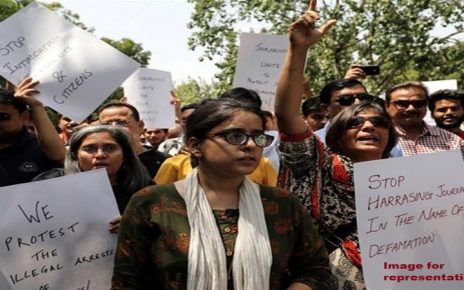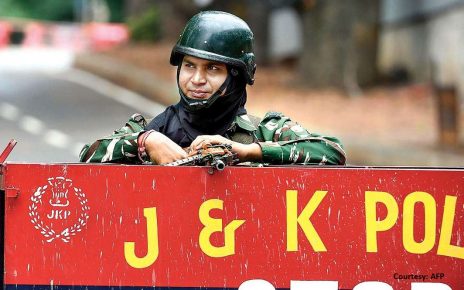On 14 May, the international media broadcast astonishing split screen images from Palestine and Israel. In one half of the screen were celebratory images of Jared Kushner and Ivanka Trump opening the American Jerusalem embassy and posing for selfies, in the other were the images of Israel Defence Forces (IDF) massacring Palestinian protesters. At least 58 Palestinians including six children and a health worker were killed and about 1,360 demonstrators were injured in the live ammunition fire by the IDF. Of those injured, 155 were in critical condition while 10 journalists suffered gunshot wounds. On 16 May the US ambassador to the UN, Nikki Haley, defended Israel and said: “No country in this chamber would act with more restraint than Israel has.”
While deeply shocking, the Embassy massacre and the grievances that it underlines should be of deep concern to the international community. It should be, but it won’t be. It has rapidly disappeared from the short attention spans of most of media and policymakers.
Western narrative about Islam:
If the past offers any guidance, the Embassy massacre will operate as a powerful political symbol, an emblem of the wider and increasingly radicalized Western narratives about Islam and Muslims, similar to Abu Ghraib and Guantanamo. These symbols play a part in how extremist groups, like Islamic State, raise funds, recruit and carry out barbarous terrorism.
Islamic State thrives on the narrative that Muslims and Islam are under attack, the West is the enemy of Islam, Muslims must use violence to defend themselves, and violence is the path to salvation. While the relationship between terror recruitment and a terrorist narrative is not an exact science, the emerging evidence strongly suggests that these broad narrative themes play a role in recruitment and support, drawing in individuals whose experiences, grievances, perceptions, and beliefs align. To them, the narrative seems authentic: it rings true. The Embassy massacre would seem to represent a significant and politically potent symbol, confirming Islamic State’s narrative.
Worse still, if one were to believe counter-terror experts, then the Embassy massacre and America’s appalling “let them eat cake” indifference would appear to likely to feed new recruits for Islamic State and other Islamic extremist groups, and ultimately appalling new acts of barbarity.
But if this were not bad enough, experiences with terrorism has worse lessons. Academic studies on the subject show that acts of terrorism set in motion a process of radicalization of governments and societies in response to terrorism.
This is not terribly hard to see. American radicalisation, for example, can be seen in the shift in Bush-era language that ascribed terrorism to a “perversion of Islam” to the current administration’s casual and repeated reference to “radical Islamic terrorism” and even worse “war with Islam”. But it is not just words where one can see American radicalization in its reactions to terrorism, but also its actions from the exceptional measures, often in defiance of international norms, including the illegal invasion of Iraq, the illegitimate legalization of torture, the use of drones, and now indifference to a massacre.
Again, all of these, whether one likes it or not, plays into Islamic State’s worldview and its global ambitions. This is hardly contentious. They literally publish their glee. But government radicalisation, assisted by the wild-eyed hyperbole of sections of the media and supported by ever greater sections of the general public, sets off a downward cycle of increasing intolerance and demonization of whole communities.
Troublingly, there is good evidence that this cycle, in turn, creates space for the re-emergence of old extremes and extremists who, again, in turn, normalize what was previously extreme. Again, look where Europe and the United States are headed. It is difficult to separate the dynamics between the rise of the far right and Neo-Nazi movements in Europe and the United States, from the increasingly radicalized counter terror language of Western governments. These extremists have shifted center-right parties into normalizing ever more hardline views, again all enthusiastically assisted by sections of the Western media.
Asian reality about shades of religious extremism
Asia has not escaped this dynamic. Intolerant government narratives like those in the West have created the space for the re-emergence of powerful extremist movements, including Hefazat-e-Islami in Bangladesh, The 969 and the Bodu Bala Sena in Sri Lanka, and the Islamic Defenders Front and the Betawi Brotherhood Forum in Indonesia.
Importantly, although these groups in Asia often incite and use violence, they are not designated as terrorist groups. These extremist groups in turn add ever more momentum behind identity and the ethnic or religious (or a combination of both) outbidding of mainstream political parties and the media, creating a vicious cycle of destabilizing intolerance, ever narrower interpretations of religion, and ethnoreligious or ethnic identity that seeks to reject or at best undermine the democratic foundations of the state. These groups increasingly become mainstream.
Asian states should be concerned, but they do not appear to be. One needs only look at Myanmar to see where this radicalization can most visibly end: what increasingly appears to be the genocide of the Rohingyas. Notably, the narrative in Myanmar that was used to justify the genocide is worryingly familiar: Buddhism is under attack, Islam is the enemy of the Buddhists, Buddhists must use violence to defend themselves, and violence is the path to salvation.
The difference between this narrative and that of Islamic State is only that the Myanmar narrative had support across a wide section of the population, particularly the dominant Bamar community, as well as within state institutions, the media, politicians and religious leaders. Myanmar is hardly novel though and the parallels, just for example, of Sri Lanka’s unresolved conflicts are hard to miss.
But it is not just Myanmar that is affected. While the international community wrings their hands around Myanmar, Bangladesh is now left to deal with the consequences, including the destabilization that may result from a near a million refugees settling into the Chittagong Hill Tracts (CHTs) to the extreme detriment of indigenous peoples of the CHTs – a reality even ignored by the rights groups.
Myanmar is teetering away from reform and development. It is a radicalized, divided, intolerant society in hock to the military, and its extremist religious leaders. It is hard not to recall the parallels with the fate of Yugoslavia in this regard. Again, the region should be concerned.
However, these conflicts are not the inevitable transnational Samuel P Huntington’s clash of civilization, but rather the appropriation of that concept to create a stronger local narrative that Buddhism and Islam are irreconcilable and existential conflict is therefore inevitable.
International inaction over the Rohingya, functions very much like those in Israel, providing narrative fodder for Islamists who claim with some justification that Muslims are under threat. Buddhist extremists draw succor from American claims that the whole thing was staged by terrorists and repeat the message in their context.
Possible impact of Western narrative on Asia
In a globalized and highly connected World, the normalised and increasingly hysterical anti-Muslim narrative of the West has impact on the Asian states, particularly those with large ethnic and religious divisions. Asia has already been facing such extremist groups and needs to be tackle terrorism.
However, the current counter terror methods are visibly failing. Worse still, counter-terror, as currently conceived, is provoking further division, violence and instability; radicalizing not just individuals but whole societies. The violence in one small province of Myanmar is rapidly looking like a regional security problem affecting South and South-East Asia regions.
There is an enormous task to change how Asia addresses terrorism. It starts with the difficult leap to recognize that violent extremism is neither unique to Islam nor indeed to a particular religion but rather, it is rooted in much wider social, economic and political drivers.
While dominant Asian States need to begin urging Western nations to tone the language down, there is a need to get its own house in order. There is a huge task to convince all stakeholders involved, including the general public, that extremism of all shades, not just politically expedient ones, poses a threat to national security in Asia. A fundamental rethink beyond counter terror means is urgently needed.



